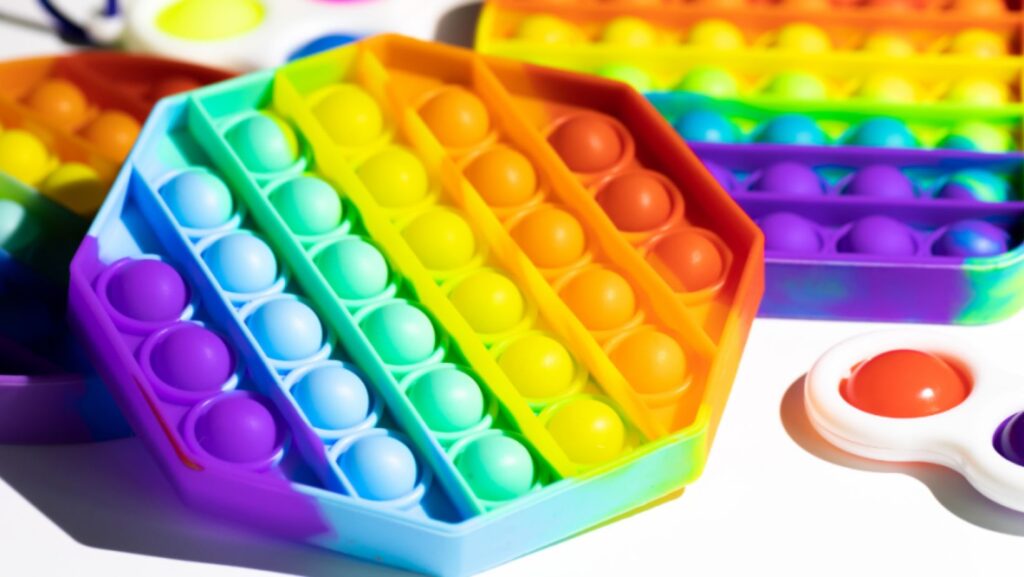Sensory Toys for Kids
When it comes to sensory toys for kids, the options seem endless. These specialized toys are designed to stimulate various senses in children,  providing both entertainment and educational value. From squishy textures to bright colors and soothing sounds, sensory toys offer a range of benefits for kids of all ages.
providing both entertainment and educational value. From squishy textures to bright colors and soothing sounds, sensory toys offer a range of benefits for kids of all ages.
As an expert in child development, I’ve seen firsthand the positive impact that sensory toys for kids can have on children. These toys not only engage kids’ senses but also help them improve their motor skills, concentration, and overall cognitive abilities. Whether it’s a fidget spinner for focus or a textured ball for tactile stimulation, sensory toys for kids play a crucial role in enhancing children’s play experiences.
Finding the right sensory toy for a child involves considering their individual preferences and needs. Some children may benefit from calming sensory toys like stress balls or weighted blankets, while others may prefer more interactive options such as light-up gadgets or musical instruments. With the wide variety of sensory toys for kids available on the market today, there is something out there for every child to enjoy and learn from.
Overview of Sensory Toys for Kids
Exploring the world through play is crucial for a child’s development. When it comes to sensory toys for kids, they serve a vital role in stimulating various senses and promoting learning in an enjoyable way. These toys are designed to engage children in activities that enhance their sensory experiences, including touch, sight, sound, and movement.
Benefits of Sensory Toys: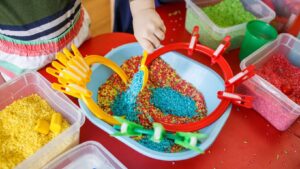
- Enhanced Development: Sensory toys can aid in developing fine motor skills, hand-eye coordination, and cognitive abilities.
- Calming Effects: Many sensory toys are designed to provide comfort and relaxation for children with sensory processing issues or those who simply need a soothing outlet.
- Encouraging Exploration: By offering different textures, colors, and shapes, these toys encourage kids to explore and discover the world around them.
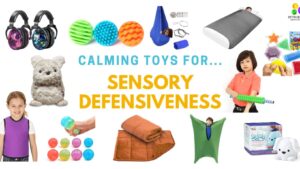 Types of Sensory Toys:
Types of Sensory Toys:
- Tactile Toys: Such as squishy balls or textured puzzles that help stimulate the sense of touch.
- Auditory Toys: Including musical instruments or sound-producing gadgets to engage auditory senses.
- Visual Toys: Like colorful light-up toys or visually stimulating patterns to captivate young minds.
- Movement-Based Toys: Swings, trampolines, or spinning seats that promote physical activity while enhancing balance and coordination.
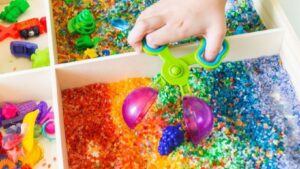
Choosing the Right Toy:
When selecting sensory toys for kids, it’s essential to consider the child’s preferences and sensitivities. Observing how they interact with different stimuli can guide you in choosing the most suitable toy that aligns with their needs and interests.
Integrating sensory toys into a child’s playtime routine can foster creativity, exploration, and overall well-being. These engaging tools not only entertain but also support children in developing essential skills that will benefit them both now and in the future.
Benefits of Sensory Toys for Kids
When it comes to the benefits of sensory toys for kids, the positive impact on child development cannot be overlooked. These toys play a 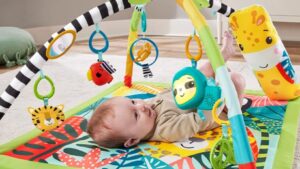 crucial role in enhancing various skills and abilities in children while providing them with enjoyable play experiences.
crucial role in enhancing various skills and abilities in children while providing them with enjoyable play experiences.
One significant benefit of sensory toys is their ability to stimulate multiple senses simultaneously. Through engaging with different textures, colors, sounds, and shapes, children can improve their sensory processing skills and enhance cognitive development.
Sensory toys also promote creativity and imagination in children by encouraging open-ended play. By allowing kids to explore and interact with the toys in their unique ways, these playthings foster divergent thinking and problem-solving skills.
Moreover, sensory toys can have a calming effect on children who may experience anxiety or sensory overload. The tactile feedback provided by these toys helps soothe nerves and promotes relaxation, making them particularly beneficial for kids with sensory processing disorders.
In addition to individual skill development, sensory toys are also valuable tools for promoting social interaction among children. When kids engage in collaborative play using sensory toys, they learn important social skills such as sharing, communication, and cooperation.
Overall (Avoid starting sentences with “overall”), incorporating sensory toys into a child’s playtime routine can have far-reaching benefits that extend beyond mere entertainment. By nurturing various aspects of child development – from cognitive abilities to social skills – these toys serve as valuable assets in supporting holistic growth and learning opportunities for children.
Types of Sensory Toys for Kids
When it comes to choosing sensory toys for kids, the options can be overwhelming. Here are some popular types to consider:
 Fidget Toys: These toys help kids who may struggle with focus or attention by providing a tactile outlet for excess energy.
Fidget Toys: These toys help kids who may struggle with focus or attention by providing a tactile outlet for excess energy.- Visual Stimulation Toys: Items like glitter tubes or light-up wands can engage a child’s visual senses and offer calming effects.
- Auditory Sensory Toys: Musical instruments or sound machines can provide auditory input and promote sensory exploration.
- Tactile Sensory Toys: Textured balls, squishy shapes, or kinetic sand offer tactile stimulation for tactile-sensitive children.
In addition to these categories, there are also multisensory toys that stimulate multiple senses simultaneously. It’s essential to observe how each child responds to different stimuli before selecting the most suitable sensory toy. By incorporating a variety of sensory experiences into playtime, you can support a child’s development and overall well-being.
Factors to Consider When Choosing Sensory Toys for Kids
When selecting sensory toys for kids, it’s crucial to keep in mind various factors that can enhance the child’s play experience and developmental growth. Here are some key considerations to take into account:
- Age Appropriateness: Ensure the sensory toy is suitable for the child’s age and developmental stage. Younger children may benefit
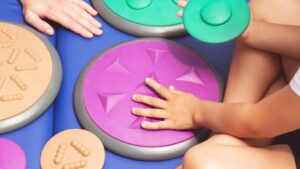 from toys with vibrant colors and different textures, while older kids might enjoy more complex puzzles or building sets.
from toys with vibrant colors and different textures, while older kids might enjoy more complex puzzles or building sets. - Sensory Input: Consider the specific sensory needs of the child. Some children may seek out sensory input through activities like swinging or jumping, while others may be more sensitive to certain textures or sounds. Choose toys that align with the child’s sensory preferences.
- Safety: Prioritize safety when choosing sensory toys. Opt for toys made from non-toxic materials, free of small parts that could pose a choking hazard, and ensure they meet any relevant safety standards.
- Versatility: Look for toys that offer versatility in how they can be used. Toys that can be adapted for different types of sensory play or
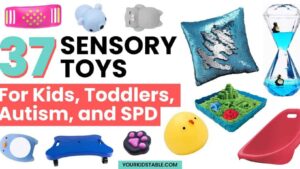 incorporated into various activities provide long-lasting value.
incorporated into various activities provide long-lasting value. - Engagement: Select toys that capture the child’s interest and encourage engagement. Interactive toys that respond to touch or movement can help hold a child’s attention and promote extended play.
By considering these factors when choosing sensory toys for kids, you can select items that not only provide entertainment but also support their sensory development and overall well-being. Remember, each child is unique, so observing their responses to different stimuli can guide you in finding the most suitable options tailored to their individual needs.
Best Practices for Using Sensory Toys with Kids
When it comes to utilizing sensory toys with kids, there are a few BEST PRACTICES to keep in mind. Here are some tips and strategies:
- Understand the Child’s Needs: Before introducing any sensory toy, it’s crucial to understand the specific needs and preferences of the
 child. Some children may benefit more from tactile stimulation, while others may respond better to visual or auditory input.
child. Some children may benefit more from tactile stimulation, while others may respond better to visual or auditory input. - Rotate Toys Regularly: To prevent overstimulation or desensitization, consider rotating the sensory toys on a regular basis. This can help maintain the child’s interest and prevent them from getting bored with a particular toy.
- Supervise Playtime: Always supervise children when they are using sensory toys, especially if the toys contain small parts that could be a choking hazard. Additionally, monitoring their play can help you assess how
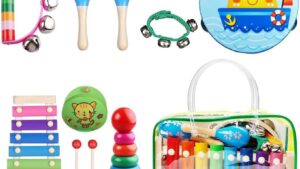 they are responding to the toy and make adjustments as needed.
they are responding to the toy and make adjustments as needed. - Encourage Exploration and Creativity: Allow children to explore the sensory toys freely and encourage them to use their imagination during playtime. This can help foster creativity and independent thinking while providing valuable sensory input.
- Seek Professional Advice if Needed: If you have concerns about how your child is responding to sensory toys or if you suspect they may have specific sensory processing issues, don’t hesitate to seek advice from a pediatrician or occupational therapist specialized in sensory integration.


